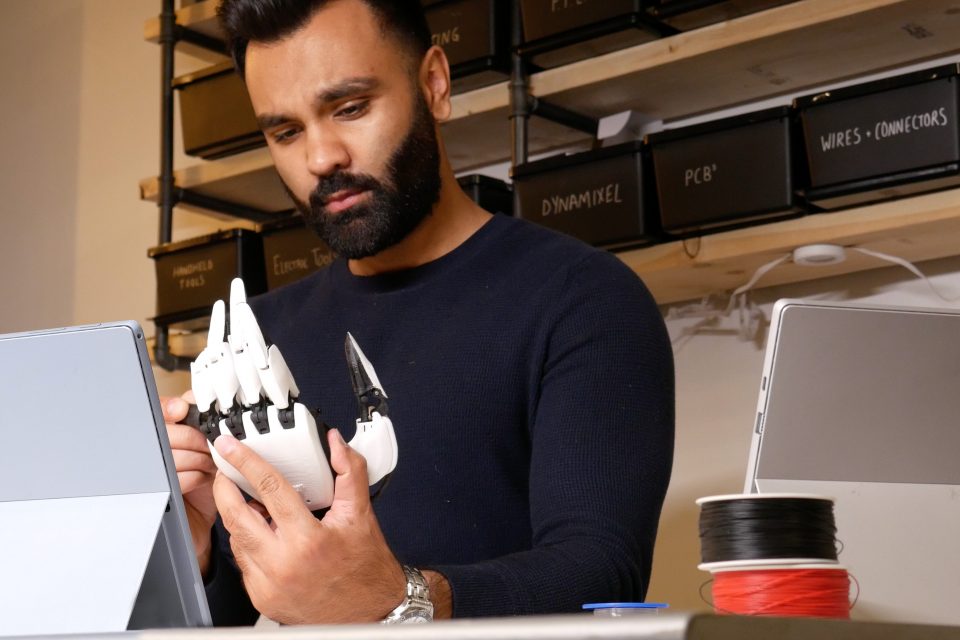By Chris Barry, Microsoft Canada President
More than one billion people worldwide live with a disability – this includes over 6.2 million Canadians. Whether it’s visual, motor, cognitive or mental health-related, living with a disability can limit a person’s employment opportunities, can make it more difficult to access services, and can put everyday activities out of reach. It doesn’t have to be this way. By leveraging technology, we can make the world more inclusive and accessible for everyone – empowering people with disabilities to achieve more in all areas of life.
Global Accessibility Awareness Day (GAAD) marks an annual moment to talk, think, and learn about digital access and inclusion for everyone. People with disabilities continue to face barriers in all aspects of society from attitudinal barriers to systemic and technological barriers. It is our opportunity to change the conversation.
At Microsoft, we believe that technology like artificial intelligence can empower people of all abilities and unlock new opportunities at the workplace, within the community, and in daily life. From helping people with low vision to navigate the world around them with Seeing AI to real-time speech-to-text transcription which is facilitating easier communication for people that are hard of hearing.
AI is helping strengthen the future of accessibility, and we at Microsoft, are privileged that our solutions are providing a foundation for others to create, innovate, and drive real impact across Canada.
Bringing big ideas to life with AI
In collaboration with TECHNATION, Microsoft launched the AI for Accessibility Student Challenge. Post-secondary students from across Canada were invited to share their big ideas exploring how artificial intelligence can be used to create a more accessible world with the opportunity to win cash prizes and Microsoft technology. We believe that AI can augment human capabilities and unlock opportunities around us, and we were curious to see how the next generation of leaders would approach it.
We saw incredible solutions that focused on supporting a range of inclusive needs – from hearing, sight, mental health and learning. Further, students did not need a background in technology to participate in the challenge; we paired each team with a mentor from Microsoft and TECHNATION to help them bring their concepts to life.
We invited the top teams to our Canadian Headquarters in Toronto to pitch their final concept to the judges and were thrilled to announce the following projects as winners:
- WriteNow transcribes live audio, batch converts stored files and provides an editable notebook interface to revisit past conversations in audio-text format. Addressing accessibility touchpoints, it facilitates information access to all. Submitted by Alice Yang, Jeffrey Li, Ethan Wu and Raymond Wang.
- AmplifAI aims to solve communication difficulties caused by dysarthria by providing real-time speech augmentation and enhancement. This tool uses AI to correct pronunciations and clarify words based on personalized speech patterns. Submitted by Sean Tang, Yeojun Han and Iris Xu.
- Canvas AEye is a tool and software connection between Nvidia Canvas and eye-tracking technology, made to promote equal opportunities to create unique art using AI. This tool will turn a user’s eye-gaze brush strokes into images using AI. Submitted by Marco Carreiro, Dylan Randolph and Allison Randolph.
SmartARM is making AI-powered prosthetics more accessible.
At Microsoft, we believe artificial intelligence (AI) is the defining technology of our time. A fundamental aspect of our work is combining our technology and AI expertise with the talent of groups around the world to help solve some of the world’s most challenging societal issues like accessibility.
Take smartARM for example, a Toronto-based company innovating in AI-powered robotic prosthetics. Founded in 2018, SmartARM started as a conversation between two friends, Hamayal Choudhry and his friend Sekai Trudy who lives with a congenital limb difference, about a gap in the market where people were forced to choose between an affordable or functioning prosthetic.
Their conversation quickly grew into something greater – the creation of smartARM – a robotic hand prosthetic that uses Microsoft Azure and AI services, including Azure Computer Vision, Machine Learning and Cloud Storage technology to recognize and grip objects. SmartARM is the world’s first bionic arm that can “see” which enables people with limb differences to look at and feel objects around them, without the strenuous effort of thinking about it. And because of mobile technology and advances in 3D printing, they can offer the prosthetic at an affordable price and massively reduce the wait time for users. Their use of technology and purpose-driven mission are what propelled smartARM to becoming the first Canadian organization to win Microsoft’s Imagine Cup in 2018.
For people with limb differences like Shaquem Griffin, technology like smartARM brings optimism and excitement for the future of accessibility. The former professional football player struggled to find a prosthetic that was right for him. Many were uncomfortable to wear or didn’t meet his needs, but working with smartARM was different. He met with co-founders Hamayal and Evan to learn more about their purpose and the technology behind their robotic prosthetics, and left feeling like he finally met a company that gets it. Shaquem and the team are now working closely on the creation of Shaquem’s own smartARM.
Watch Shaquem Griffin and smartARM’s story below:
Keep moving forward.
Microsoft’s commitment to driving accessibility and inclusion begins with incorporating inclusive design and accessibility into our products and services but it doesn’t end there. We share our learnings and resources to help other organizations innovate with our solutions, with the goal of making a meaningful difference in the lives for people living with disabilities.
To learn more about Microsoft’s accessibility efforts and how you can help build a more equitable and accessible future, check out the following resources:
- Accessibility Innovation Toolkit
- Workplace Accessibility Starter Kit
- Microsoft Inclusive Design for Cognition Guidebook
- Create Inclusive Content with the new Accessibility Assistant in Microsoft 365




